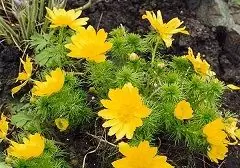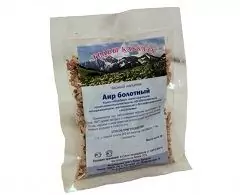Table of contents:

Video: Indian Onion - Useful Properties, Indications For Use

2024 Author: Rachel Wainwright | [email protected]. Last modified: 2023-12-15 07:39
Indian bow
Instructions for use:
- 1. Application
- 2. Harm

The popular interpretation of the name of the Indian bow sounds like "brandu". The botanical name literally translates from Greek as "bird's milk", which, presumably, was given thanks to the graceful white flowers. South Africa is considered the homeland of onions, but this plant is widespread in America, in the Mediterranean countries and in India, in China, as well as in Southeast and Central Europe.
Thanks to the healing properties of Indian onions in Germany, it is considered a sacred plant, and recipes for drugs for the treatment of various diseases, which include onions, are passed down from generation to generation. The strongest bactericidal properties of the plant were known in the last century.
There are approximately 600 types of Indian onions in the world, with some of them significantly different in appearance. Also, onions are a fairly popular "material" in feng shui, in which they are used to bring harmony and peace to the house, they are the patron saint of affairs, promotes labor success and career growth. In addition, the Indian onion is a symbol of optimism, energy, prosperity, vitality, curiosity and an active lifestyle. Bows are widely used by florists to create unique compositions.
Outwardly, the Indian onion resembles a simple onion. It has cordlike white roots and a green bulb that can live 20 to 30 years. It is from the bulb that drooping leaves grow from time to time, which are rolled up at the ends into a tube. If the leaf is torn from the plant itself, then a special juice will be released from it. An adult plant can have leaves up to 5 cm wide and up to 1 m long.
The bulb is light green in color, as well as white, film-like scales. It is under the scales that seeds are born, which can later be rejected when they reach 1.5 cm in length and 1 cm in diameter.
Indian onion blooms in November-December, reaching the second or third year of growth.
Application

In official medicine, there is no information on the use of onions, nor is it on the list of medicinal plants. But on the other hand, treatment with Indian onions is widely practiced in folk medicine.
The bow can be absolutely safe only when used externally. All parts of the plant have medicinal properties, which, it should be noted, appear only in the second year of Indian onion growth. The healing qualities reach the maximum indicator during the flowering period, however, treatment with a piece of onion or with a leaf can be carried out much earlier. The medicine is mucus, which is secreted by arrows, leaves and the bulb itself. The juice has neither color nor smell, therefore it is convenient to use.
The healing properties of Indian onions lie in the antiseptic and analgesic effect of the plant. The active substances of onions can promote active blood flow to certain diseased areas on the body.
Preparations containing Indian onions, the treatment of which is possible in the form of decoctions or tinctures, are extremely fast acting. The mother bulb should be used as the main plant, which will further procreate. In this case, sprouts and small onions are the best remedy. From a large bulb, it is worth taking only the largest leaves, even if part of them has already dried up, since it is in this area that most biologically active substances accumulate.
A fresh cut will be sufficient for topical application. In this case, it will be enough to rub the sore spot, the pain will go away within a few minutes, however, a slight tingling sensation is possible. Treatment with Indian onions is performed for various diseases of the musculoskeletal system, such as arthrosis, polyarthritis, radiculitis, osteochondrosis and salt deposits in the joints. It also helps with infectious and mechanical skin lesions. The use of Indian onions can significantly relieve headaches and various colds. Indian onions can also be used to treat warts.
Many renowned folk healers consider onions to be one of the best remedies for treating sciatica, especially old ones. Also, preparations that include this onion can heal wounds, especially from animal bites. It is noted that after such a procedure, there are practically no scars. Preparations with Indian onions are widely used to treat rheumatism.
Indian onion is also indispensable in the treatment of mastitis at any stage, because it has a very powerful analgesic effect and enhances blood flow, while removing accumulated harmful substances.
Harm
The use of Indian onions can be dangerous, because the information available about it is quite contradictory, so you need to use various drugs as carefully as possible. It is allowed to use the tincture in a few drops, diluting it in a quarter of a glass of water. Under no circumstances should undiluted plant sap get inside, as it is poisonous. Absolutely all preparations containing this plant are contraindicated in patients with hemophilia.
Outwardly, it can only be applied to absolutely clean skin, it is also worth considering the fact that intensive treatment with Indian onions can cause burns or allergic reactions.
Indian onion preparations can only be prepared with rubber gloves.
Information about the drug is generalized, provided for informational purposes only and does not replace the official instructions. Self-medication is hazardous to health!
Recommended:
Spring Adonis - Properties, Indications For Use, Reviews

Adonis is a herbaceous plant from the genus of buttercups. The pharmaceutical industry produces on the basis of adonis tincture and tablets of Adonizid, which are prescribed for cardiac neurosis, vegetative vascular dystonia, etc
Marsh Calamus - Indications For Use, Properties

Calamus marsh has a beneficial effect on digestion and reduces gas formation in the intestines
Althea Officinalis - Properties, Indications For Use

Marshmallow is a medicinal plant with expectorant and anti-inflammatory properties
Onion Diet For Weight Loss - Recipes, Reviews

Onion diet is a healthy dietary food based on the use of various onion dishes
Onion With Honey For Cough: A Recipe For Children And Adults With Added Sugar

Onion with honey for coughing is an effective folk remedy that can be used in addition to the main treatment for many diseases of the respiratory tract






